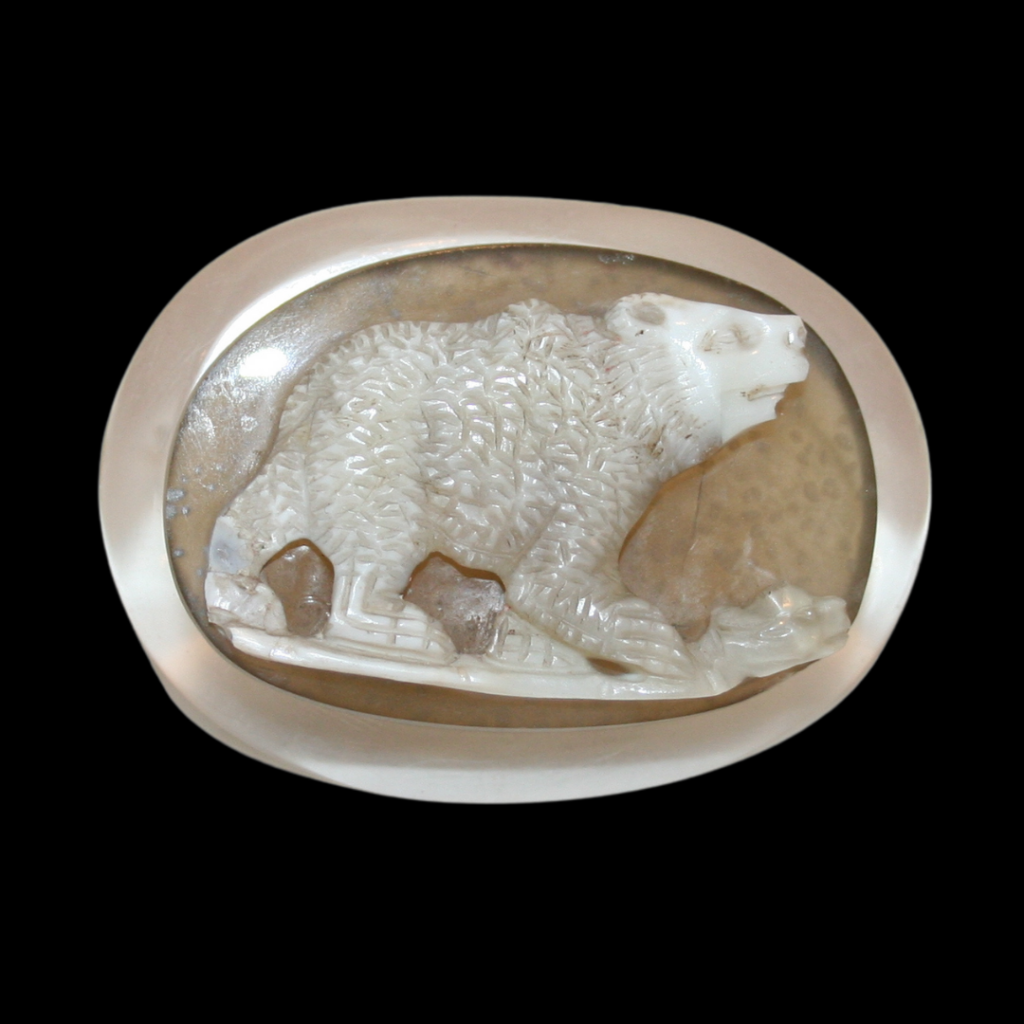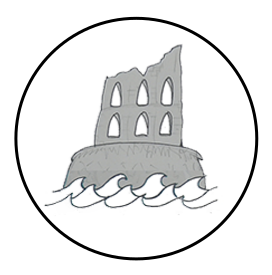
This is a Roman bear cameo from Arbeia. It’s cut from sardonyx stone, a type of agate. As well as being unbelievably detailed and beautiful, it offers a tantalising clue about the place.
I wrote in this post about the post-Roman name for South Shields being ‘Caer Urfa’, with ‘caer’ meaning fort while ‘urfa’ remains a mystery. Well, could it not be that ‘urfa’ is a corruption of the Latin for ‘bear’: ursa? That is, Caer Urfa was ‘Bear Fort’.
The changing of one phoneme from ‘s’ to ‘f’ is a tiny jump (sibilant fricative to close non-sibilant fricative). And it would not be surprising if the ancient Britons had from prehistoric times referred to the Lawe at South Shields as ‘the place of bears’, the Romans simply calqued this to Latin, then the post-Roman settlers, a mix of Angles and Britons, kept the name, with this very slight sound change coming in perhaps centuries later from a scribe, from where Leland eventually received it in the 16th century.
To put it another way: Arbeia was the late-Roman name for the fort. This ‘place of the Arabs’ was in honour of the Tigris bargemen stationed there, and this has been well-argued by N Hodgson (2005). This name replaced the earlier name for the fort, Lugdunum. The wider area of the Lawe, occupied since Mesolithic times and essentially an island at the time, was known as “the place of bears”.
Who knows? But it seems a plausible theory to me.
References:
The Roman place-names Arbeia and Corstopitum: a rejection of recently suggested meanings, N Hodgson (2005)
Update: Edinburgh-based Celtic scholar, William Young, added this fascinating piece of knowledge referencing the veneration of bears in Redesdale, Northumberland:





Very good research fascinating findings